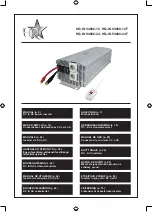
Installation and operating manual
Page 16 of 95
(PVI-3.8/4.6-I-OUTD Rev.: 1.5)
Fig. 3 - Simplified diagram of a photovoltaic system
2.2
Data transmission and monitoring
If more than one inverter is used, they may be monitored, even remotely, by using an
advanced communication system which is based on the RS-485 serial interface. The
AURORA Easy-Control system is also available as an additional form of monitoring,
and allows for the remote monitoring of the system via the Internet or digital GPRS
modem. Furthermore, a system of radio monitoring is also available as an option (PVI-
Desktop + PVI-Radio module) to obtain a remote data display terminal, connected
wirelessly.
2.3
Technical description of the AURORA inverters
Fig. 1 shows the block diagram of an AURORA inverter. The main blocks are the
input DC-DC converters (known as “boosters”) and the output inverter. Both the DC-
DC converters and the output inverter work at a high switching frequency to enable a
compact design and a relatively low weight.
This version of inverter has a high frequency transformer, i.e. a transformer with
galvanic isolation between input and output. The high frequency transformer allow
galvanic isolation between the primary (DC side) and the secondary (AC side),
maintaining very high performance in terms of energy yield and export. The
AURORA inverters are equipped with all of the protections necessary for a safe
DC disconnect
switch
AC disconnect
switch
















































